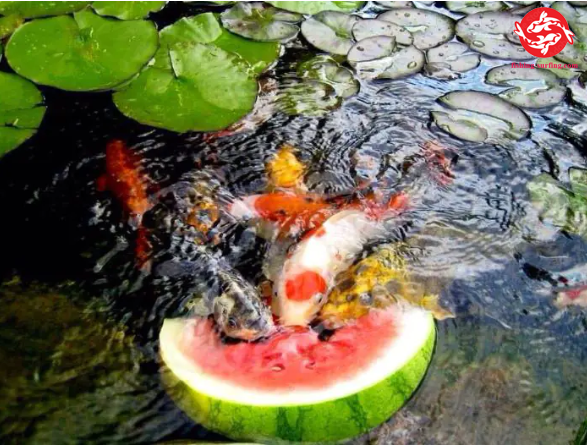When it comes to the enchanting world of koi fish, one of the most frequently asked questions is “koi fish what do they eat.” The diet of these beautiful aquatic creatures not only affects their health and growth but also plays a significant role in the aesthetics of any pond or water garden. Understanding their dietary needs can be a vital aspect of koi keeping; thus, this article dives deep into their preferred foods, nutritional requirements, feeding habits, and much more.
Basics of Koi Fish Diet
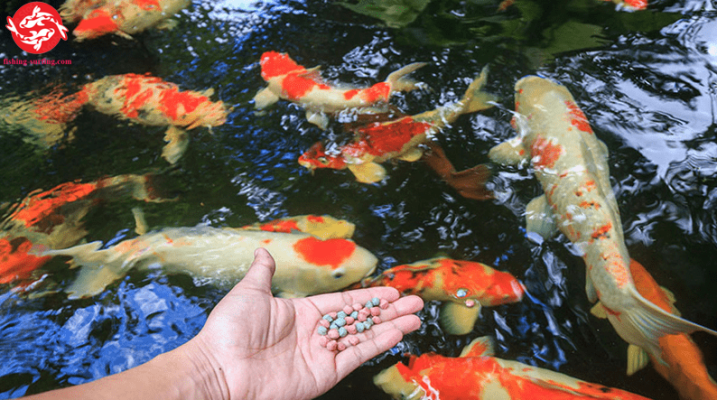
In order to provide an optimal diet for koi fish, it’s essential to understand their natural habits and food sources. Koi are omnivorous; they thrive on a diverse diet consisting of both plant and animal matter. This characteristic makes them relatively easy to feed as there are several dietary options available.
Koi fish are often found basking in ponds or lakes, where they forage for food. In the wild, they consume various organic matter, including algae, water plants, insects, and small crustaceans. As such, creating a varied and balanced diet for your koi can help mimic their natural feeding behavior, ensuring their health and vitality.
Nutritional Requirements
The nutritional needs of koi fish vary based on their age, size, and overall health. A well-balanced diet should include proteins, carbohydrates, fats, vitamins, and minerals.
Proteins play a crucial role in the growth and development of koi fish. Young koi require high protein levels for proper growth, while adult koi benefit from a moderate protein intake to maintain their energy and health.
Carbohydrates serve as a vital energy source for koi fish, particularly during the warmer months when they are more active. Fats also contribute to energy but should be provided in moderation, as excessive fat can lead to health issues.
Vitamins and minerals are equally essential for maintaining a robust immune system and promoting healthy growth. Providing a variety of food types helps ensure that koi receive all the necessary nutrients to thrive.
Common Food Options
There are numerous commercial koi fish feeds available, each designed to cater to different dietary needs. These feeds typically come in pellet form and contain a blend of essential nutrients formulated specifically for koi fish.
Apart from commercial feeds, you can also supplement your koi’s diet with natural food sources.
- Vegetables: Leafy greens like lettuce, spinach, and even peas can be a great addition to their diet.
- Fruits: Certain fruits like watermelon and grapes can be cut into small pieces and fed to koi as occasional treats.
- Live Foods: Small insects, worms, and larvae can replicate what koi would naturally consume in the wild.
Using a variety of foods not only enhances the nutritional quality of their diet but also adds excitement and enrichment to their eating habits.
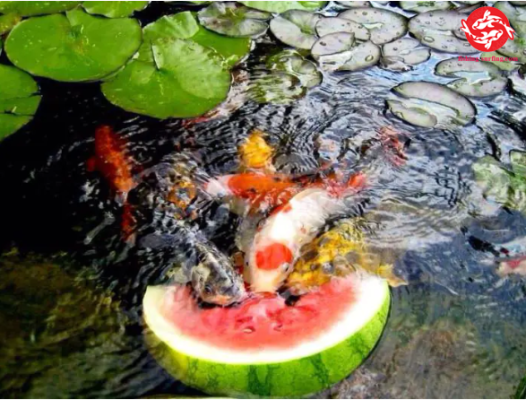
Feeding Schedule and Techniques
Understanding how to properly feed koi fish is just as important as knowing what they eat. Establishing a feeding routine can significantly impact their health, growth rate, and even their color vibrancy.
Creating a consistent feeding schedule allows your koi to build a regular routine. This can not only minimize stress but also encourage your fish to engage in natural foraging behavior. Generally, koi fish should be fed two to three times a day, depending on their age and size.
Observing Feeding Behavior
Observing your koi during feeding times can reveal valuable insights into their preferences and behaviors. Are they eagerly swimming to the surface at the sound of a feeding call? Or are they more cautious and take their time approaching the food?
Koi generally display a range of feeding behaviors, from aggressive feeding to more subtle nibbling patterns. Noticing changes in these behaviors can indicate shifts in their health or stress levels. For example, a sudden decrease in appetite could signal illness or environmental issues within the pond.
Avoiding Overfeeding
One critical aspect of koi care is being mindful of overfeeding. It might be tempting to spoil your koi by providing large quantities of food, but this can lead to serious health concerns. Overfeeding can cause water pollution and increase the risk of diseases like swim bladder disorder or obesity.
To avoid overfeeding, monitor the quantity of food you provide and observe how quickly your koi consume it. A good rule of thumb is to feed them only as much food as they can eat in 5 to 10 minutes. By ensuring that you adhere to feeding guidelines, you can help maintain water quality and keep your koi in peak condition.
Seasonal Dietary Adjustments
As seasons change, so do the dietary needs of koi fish. In warmer months, koi are more active and require higher protein diets to support their growth. However, in colder months, koi tend to become lethargic and may not feed at all.
During the winter, it’s important to adjust their feeding schedule accordingly. While koi can still eat in cooler water, their metabolism slows significantly, so offer easily digestible food with lower protein content.
By adapting their diet to the seasons, you can promote overall health and well-being throughout the year.
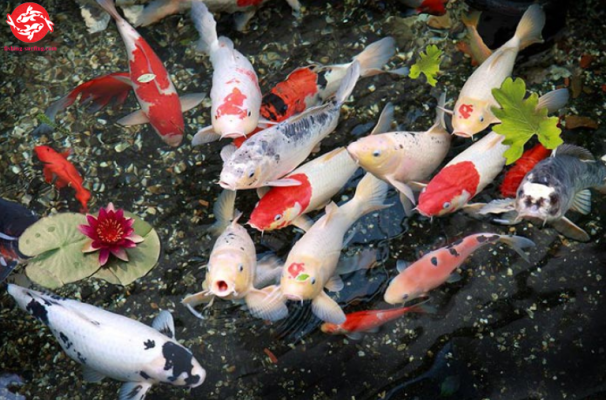
Importance of Water Quality
While focusing on koi fish what do they eat, it’s essential to remember that the diet directly impacts the water quality in which they live. Poor feeding practices can lead to waste accumulation, which can harm both the water environment and the fish themselves.
Keeping the pond clean and well-maintained is crucial for the success of your koi-keeping endeavor.
Effects of Diet on Water Quality
As koi consume their food, they produce waste, which can decompose in the water. Overfeeding increases waste, leading to imbalanced nutrient levels and harmful algae blooms. Monitoring the amount of food offered can help prevent these issues.
Additionally, uneaten food can sink to the bottom of the pond, impacting oxygen levels and water clarity. Regularly checking for leftover food and maintaining a clean pond will contribute to a healthier living environment for your koi.
Filtration and Aeration Systems
Investing in proper filtration and aeration systems can greatly enhance the quality of water in your koi pond. A solid filtration system will remove excess waste and particles from the water, ensuring a cleaner and safer habitat for your koi.
Aeration systems help maintain oxygen levels in the water, particularly during warmer months when koi become more active. Healthy oxygen levels promote better digestion, activity, and overall vitality among your fish.
Regular Testing and Maintenance
Testing the water regularly for pH, ammonia, nitrite, and nitrate levels is key to maintaining an optimal environment for your koi. Changes in these levels can signify issues that need to be addressed immediately.
Proper maintenance routines, including water changes and debris removal, will go a long way toward keeping your koi healthy and happy. By ensuring that both diet and water quality are taken into account, you can create a thriving ecosystem for your koi fish.
FAQs
What is the best food for koi fish?
The best food for koi fish depends on their specific needs, age, and size. High-quality commercial koi pellets enriched with nutrients are excellent choices. Supplementing their diet with fresh vegetables and live foods can also boost their health and enjoyment.
How often should I feed my koi fish?
Feeding koi fish two to three times a day is ideal. It’s essential to provide only as much food as they can eat in about 5–10 minutes to avoid overfeeding and water quality issues.
Can koi fish eat bread?
While some koi owners occasionally feed their fish bread, it is generally not recommended. Bread does not provide the necessary nutrients and can lead to digestive issues. Stick to a balanced diet with appropriate koi feed and supplements.
Do koi need special food in winter?
Yes, koi require special food during winter months due to their slower metabolism. Offer them easily digestible, low-protein food during cold weather, and consider reducing feeding altogether if temperatures drop significantly.
Can I mix different brands of koi food?
While mixing different brands of koi food is possible, it’s best to stick to one high-quality brand to ensure consistency in nutrition. If you want to switch brands, gradually introduce the new food to avoid upsetting your koi’s digestive system.
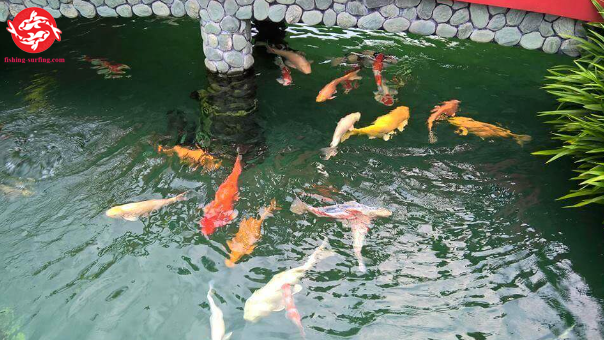
Conclusion
In conclusion, understanding “koi fish what do they eat” involves diving into their natural feeding behaviors, nutritional requirements, and the importance of maintaining a suitable environment. By providing a well-balanced diet and ensuring excellent water quality, koi enthusiasts can foster vibrant, healthy fish that thrive in their ponds. With careful observation and thoughtful feeding practices, you can create a nurturing space where your koi will flourish, bringing beauty and joy to your outdoor oasis.


